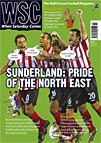 Five years ago the Football League became Leagues One and Two and the Championship. Roger Titford assesses the transition
Five years ago the Football League became Leagues One and Two and the Championship. Roger Titford assesses the transition
Lord Mawhinney of the Football League is pleased to announce attendances in the competition have risen to their highest level since the early 1960s. The particular star of the show is the Championship where crowds are up five per cent on last season and back to a level last seen in the reign of George VI (apart from a statistical blip in 2006-07).
The controversial rebranding of the Football League as the Coca-Cola Championship, Leagues One and Two is now five years old. In 2004 Mawhinney set an ambitious target of increasing aggregate attendances by about five per cent per annum to reach a total of 21 million by 2010. Apart from a three per cent rise in the first season, 2004-05, the aggregate figure has basically been static at around 16.25m so it looks as if the 2010 target will be missed by about 5m. The second tier (now rebranded as the Championship) has seen attendances rise by 12 per cent since 2003-04 but the other two divisions combined have seen a fall of ten per cent over the same period.
These figures are probably the only publicly available hard measure to evaluate the effect of the rebranding and they suggest that it is working better for the bigger clubs but not as well as had been hoped for even there. Hard measure is also possibly a misnomer. In recent years there has been a decided shift towards measuring attendance by tickets sold rather than clicks through the turnstile. Where season tickets have been sold very cheaply, “no shows” are common. At Bradford City, for instance, there can be a gap of 5,000 between the declared and the perceived attendance.
Renaming Division One the Championship does seem to have worked in the sense that most fans use and understand the term accurately and it is nice to pretend you are the Football League Champions if you win it. But Alan Hansen, for one, continues to muddle the terms Premiership, Championship and champions. As for Leagues One and Two (Mawhinney considered the word division “outdated”) they really don’t work. They’re not leagues, they are divisions of a league so the logic is totally flawed. More and more often in the media we hear the terms “first, second, third tier of English football” used as the accurate and comprehensible way of communicating important basics. The new message was “real football for real fans”. There’s not a lot else you can say but attaching the Coke brand to Grimsby v Macclesfield on the archetypal wet Tuesday night and claiming it is “League Two” still seems desperately inappropriate. The League is improving its image and developing a brand character that is different from the Premier League but how much that is driven by its own efforts and how much by public perception of the Premier League it’s very hard to say.
It’s certainly true that many of the things that Coca-Cola proposed in the 2004 sponsorship deal have either never happened or disappeared. We never saw cans of product in club colours (not being able to take cans into stadiums is an obvious flaw). We did get the Coke logo in club colours on advertising boards but that’s more of a big deal for the trademark lawyers in Atlanta Georgia than the fans in Aldershot Hampshire. Remember “the £1 million Goal Chase”? If the 72 League clubs combined scored an improbable 4,500 goals a season the sponsors would pay out. Never happened. There was going to be a Fans League with points given for crowd noise at each game (I don’t recall hearing a peep) and a Community Cup, whose structure and purpose remains unclear.
The one that did happen (and won marketing awards and generated big sales for the brand) was the buy-a-player promotion where fans collected ring-pulls in support of their team and a club could win £250,000. It was Colin Kazim-Richards’ ticket out of Bury to Brighton and later to European fame as Kazim-Kazim of Fenerbahce. You’d have thought he could at least have become Coca-Kazim. Altogether Coke gave away nearly £1m worth of prizes to League clubs over three years before scrapping the scheme. They are now promoting something about “street football” with a player still awaiting his Football League debut: Wayne Rooney.
Seven years ago on these pages we made the case that more people go to more matches at more professional clubs in more divisions than anywhere else in Europe and we’re pleased to see the League are still using this line of argument in their recent publicity. It’s a tough old world and, behind the blather, the League has been bearing up quite well and setting useful examples in matters such as fit and proper persons tests and salary caps as well as maintaining supporter numbers. But it will be a long time before “Coca-Cola League One” becomes more of a brand than “Third Division”.
From WSC 269 July 2009